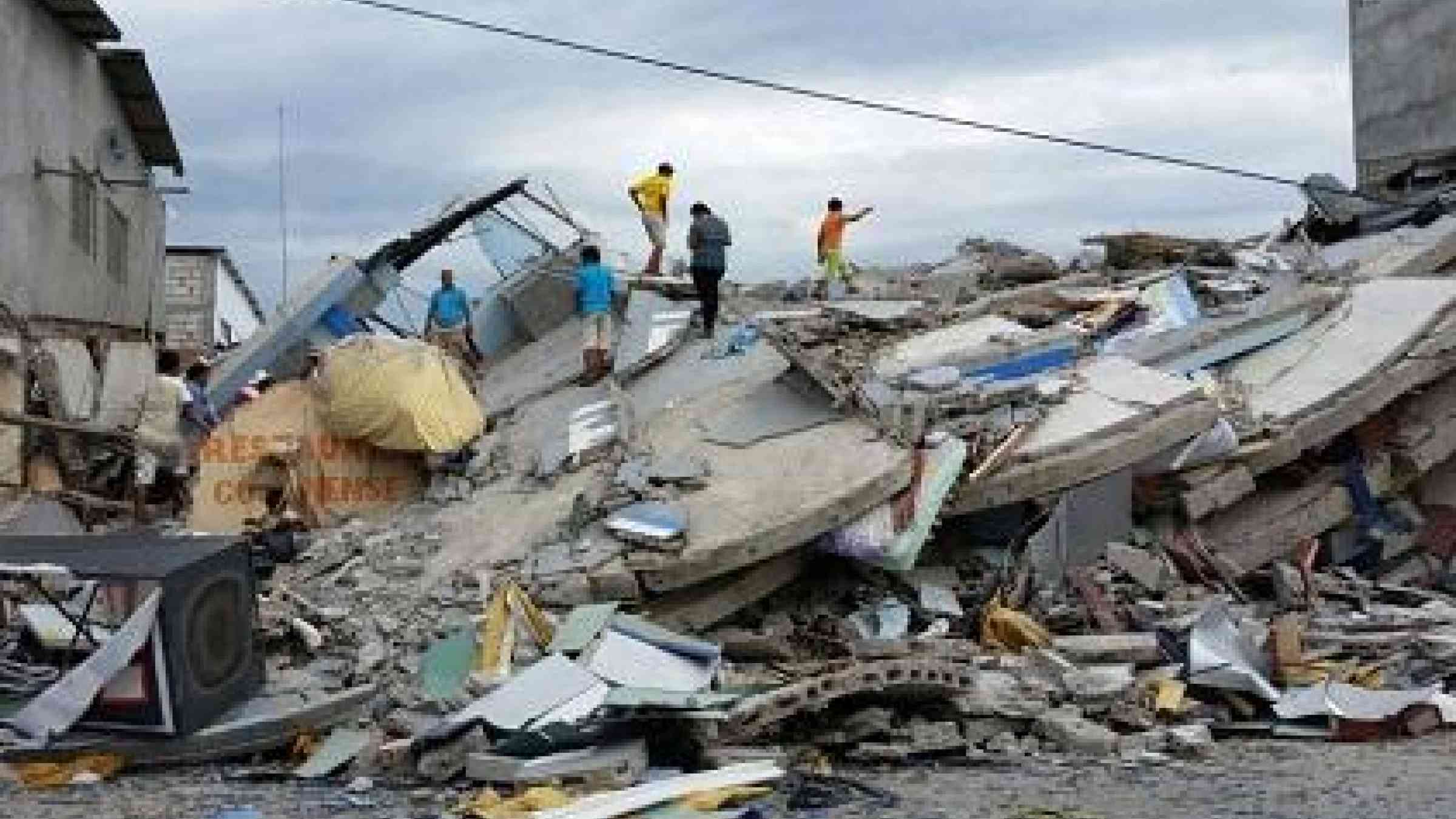Seismic safety is a matter of life and death

GENEVA, 19 April 2016 – The hundreds of deaths in Ecuador and the dozens of victims in Japan are a stark reminder of a basic fact about earthquakes: it is buildings, and not the shake itself, that claim most lives.
Collapsing homes and other infrastructure are to blame for the overwhelming majority of earthquake fatalities and injuries.
That makes structural safety a matter of life and death in zones such as the Pacific Ring of Fire, on which both Ecuador and Japan lie, in addition to the health risks posed by damaged water and sanitation systems and the hurdles that the impact on road networks can cause for relief operations.
“These earthquakes are a reminder of how important it is that we apply the highest standards possible when building in earthquake zones. It is buildings and damaged infrastructure which kill people when an earthquake strikes,” said Mr. Robert Glasser, Special Representative of the UN Secretary-General for Disaster Risk Reduction.
“Earthquakes and tsunamis are relatively rare natural hazards but they account for nearly 750,000 deaths over the last 20 years and very significant economic losses. Urbanisation within highly seismic zones has accelerated significantly in recent years and it is vitally important that this is done in a way that is earthquake-resistant for future generations,” he added.
The existence – and, crucially, the implementation – of building codes that factor in earthquake risk is a critical factor in such regions.
To improve safety even further, it is important to bring existing structures up to scratch, for example by retrofitting historic sites. Last April’s magnitude 7.9 Nepal earthquake, which killed 8,000 people, provided a grim illustration when it felled the landmark Dharahara tower in Kathmandu.
The death toll in Saturday’s magnitude 7.8 earthquake in Ecuador, the country’s strongest in decades, has already climbed to more than 400. Rescue workers are still hunting in the rubble for survivors, and over 2,600 people are listed as injured.
The quake destroyed 805 buildings and damaged over 600 more, including scores of schools, according to data from the UN Office for the Coordination of Humanitarian Affairs.
“Across Manabi and Esmeralda provinces, the earthquake has damaged or destroyed homes, hospitals, roads and businesses, power lines have been cut,” said UN Emergency Relief Coordinator Mr. Stephen O’Brien.
The collapse of several hotels in the Pacific coast tourist region has also made international headlines.
“The Government of Ecuador is leading the response, rescuing trapped people, distributing food and other relief supplies, and providing emergency shelter,” said Mr. O’Brien.
“I pay tribute to the prompt actions of the local emergency responders, especially the search and rescue teams, and preparedness measures taken by the Ecuadorean authorities, which have undoubtedly saved lives,” he added.
In Japan, meanwhile, the authorities said that at least 44 people died and 1,000 were injured in the two powerful earthquakes in the southwest of the country: a magnitude 6.4 on Thursday and a magnitude-7.3 on Saturday. They are the biggest since the Great East Japan Earthquake and Tsunami of 2011, which left more than 19,000 people dead or missing.
Japan is a case study for strictly-enforced building codes that prioritise seismic risk reduction and are reviewed regularly in the light of developments in construction technology and early warning. As a result, the regular earthquakes that hit the country usually cause minimal damage.
Ecuador has also been bolstering its own building rules.
In January 2015, its Ministry of Urban Development and Housing released new regulations, capping a process that began in 2008 and saw Ecuadorian officials and the construction sector work together with foreign experts to share lessons and best practice.
The issue was given fresh global impetus in March last year when the international community adopted the Sendai Framework for Disaster Risk Reduction, a 15-year blueprint for saving lives and livelihoods in the face of natural and man-made hazards. Besides seeking better seismic safety, the Sendai Framework also calls on countries to avoid construction on land susceptible to liquefaction, landslides and subsidence in the event of an earthquake.
“We need to build better in the first place and not just build back better after the event,” said Mr. Glasser.